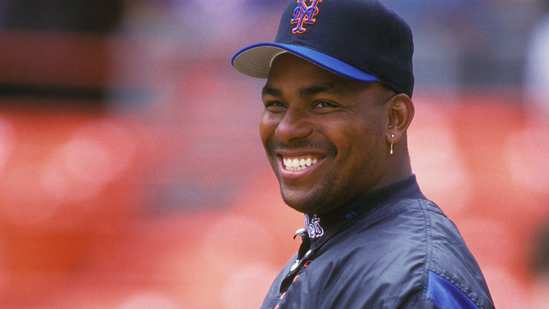Today marks the 15th annual “Bobby Bonilla Day,” a quirky milestone in baseball history when former Major League Baseball player Bobby Bonilla receives his yearly deferred payment of $1,193,248.20 from the New York Mets. This unique financial arrangement, stemming from a contract buyout in 2000, has become a cultural phenomenon, celebrated with memes, social media buzz, and a mix of amusement and disbelief among fans. As Bonilla cashes his check at age 62, the story of his iconic contract continues to captivate the sports world.
The Origins of Bobby Bonilla Day
Bobby Bonilla, a six-time All-Star and World Series champion, had a distinguished 16-year MLB career, playing for teams like the Pittsburgh Pirates, New York Mets, Baltimore Orioles, and Florida Marlins. A switch-hitter with a .279 career batting average, 2,010 hits, and 287 home runs, Bonilla was a standout in the 1990s, earning three Silver Slugger awards and finishing as the 1990 NL MVP runner-up.
Bonilla’s connection to the Mets began in 1991 when he signed a five-year, $29 million contract, making him the highest-paid player in baseball at the time. However, his first stint with the Mets (1992–1995) was marred by injuries and criticism for underperforming relative to his hefty salary, becoming a symbol of the team’s struggles during that era. After playing for the Orioles and Marlins, Bonilla returned to the Mets in 1999, but his second stint was a disaster. He played only 60 games, batting a dismal .160, clashed with manager Bobby Valentine, and was famously caught playing cards in the clubhouse during the Mets’ NLCS loss.
By 2000, the Mets were eager to part ways with Bonilla, who was still owed $5.9 million on his contract. Instead of paying the sum outright, Bonilla’s agent, Dennis Gilbert, negotiated a deal that has since become legendary. The Mets agreed to defer the $5.9 million with an 8% annual interest rate, starting payments in 2011 and continuing through 2035. This turned the original amount into nearly $30 million, paid out in annual installments of $1.19 million every July 1. The deal was attractive to the Mets at the time, as they believed their investments with Bernie Madoff would cover the payments. However, Madoff’s infamous Ponzi scheme collapsed, leaving the Mets to pay Bonilla out of pocket.
A Cultural Phenomenon
What began as a financial maneuver has grown into “Bobby Bonilla Day,” an unofficial holiday celebrated by baseball fans each July 1. Social media erupts with memes poking fun at the Mets’ long-term obligation to a player who last played for them in 1999 and retired in 2001. Bonilla himself embraces the attention, telling Front Office Sports, “It’s a beautiful day!” and noting that he receives texts from former teammates jealous of his foresight. “It’s bigger than my birthday,” Bonilla said, reflecting on the annual buzz.
The Mets, under current owner Steve Cohen, have leaned into the phenomenon. In 2021, they planned an Airbnb promotion allowing fans to rent a VIP suite at Citi Field in honor of Bobby Bonilla Day. Cohen has even joked about hosting a formal celebration with an oversized check. While some Mets fans view the payments as a reminder of past mismanagement, others see it as a humorous quirk of baseball history.
The Broader Impact
Bonilla’s deal wasn’t the first deferred contract in MLB, but it’s the most famous, thanks to its scale and the Mets’ reputation for colorful missteps. The arrangement has influenced modern contracts, most notably Shohei Ohtani’s 10-year, $700 million deal with the Los Angeles Dodgers in 2023, which defers $680 million to be paid from 2034 to 2043. Unlike Bonilla’s buyout, Ohtani’s deferrals were strategic, giving the Dodgers short-term financial flexibility while securing his future income. Other players, like Max Scherzer and Christian Yelich, have also incorporated deferrals into their contracts, inspired by Bonilla’s precedent.
Interestingly, Bonilla’s Mets deal isn’t his only deferred payment. He also receives $500,000 annually from a separate agreement with the Mets and Baltimore Orioles, running from 2004 to 2028, bringing his total annual July 1 payout to nearly $1.7 million.
A Silver Lining for the Mets
While Bobby Bonilla Day is often a punchline, it indirectly led to a significant win for the Mets. By deferring Bonilla’s payment, the team freed up funds in 2000 to trade for pitcher Mike Hampton, who helped them reach the World Series. When Hampton left for the Colorado Rockies, the Mets received a compensatory draft pick, which they used to select David Wright in 2001. Wright became one of the franchise’s greatest players, leading in runs, hits, and RBIs. In this light, Bonilla’s contract had an unexpected silver lining.
Looking Ahead
As Bonilla, now 62, collects his 2025 payment, 10 years remain until the Mets make their final payout in 2035, when he’ll be 72. The deal, once a symbol of financial miscalculation, has become a testament to Bonilla’s and Gilbert’s foresight. “I just wanted to be able to spend as if I was an active player in retirement,” Bonilla said in The Big Deal, a short film by Front Office Sports Studios.
For now, Bobby Bonilla Day remains a beloved oddity, a reminder that in baseball, as in life, the most unexpected deals can become the stuff of legend. As fans raise a toast to Bonilla’s annual windfall, the Mets keep writing checks, and the baseball world keeps smiling.
By: Montana Newsroom staff




